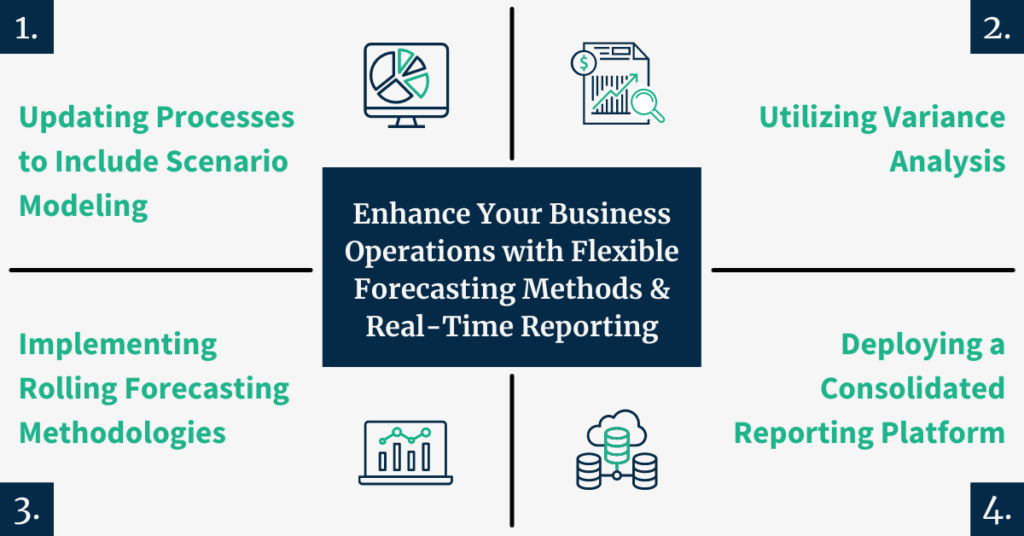Over the past few years, our data consultants have seen a substantial increase in organizations seeking data at their fingertips to allow for quick and accurate information and scenario analysis to inform operational decisions while enhancing forecasting and reporting. In this Strategic Whiteboard Series video, we discuss how to achieve this by:
- Updating Processes to include scenario modeling
- Utilizing variance analysis
- Implementing rolling forecasting methodologies
- Deploying a consolidated reporting platform
Click on the image above to open a high-resolution version in a new tab
Updating Processes to Include Scenario Modeling
Scenario modeling is becoming increasingly important for companies needing to quickly analyze and run different scenarios that may happen to their business. A lot of organizations need to play out scenarios and have what-if analyses for things like closing hundreds of stores, understanding how a decision will affect revenue and costs, reducing corporate operations spend, and updating plan targets. Being able to quickly make those updates across the organization is really important for real-time reporting and decision-making. One other important component of scenario modeling includes being able to do what-if analysis at the analyst level. Whether a project-based operation or manufacturing enterprise, having analysts who can model in their own worlds and then push things back into the main scenario for consolidated reporting provides flexibility.
Utilizing Variance Analysis
Having one platform where you can look at actuals down to a low level of detail, being able to compare that to plan or budget numbers, and ultimately reflect that against your forecast while having multiple versions of each of these reports is really important to:
- Tell the story of why your business is fluctuating in a certain direction
- Add critical context at all levels as to why business units may be missing or hitting revenue targets
- Give executive leadership a clear understanding of why things may not be happening according to plan
Creating a platform where you can easily access all of that data in one centralized place makes this information even more meaningful.
Implementing Rolling Forecasting Methodologies
Where we have seen rolling forecasts become increasingly important in organizations is in establishing a simple methodology that allows analysts to quickly update, compare, and provide forecasts, budgets, and numbers in a single platform. This ideally takes place in the same consolidated platform where CFOs would then be able to look at key metrics and KPIs. Again, making sure that everyone is looking at the single source of truth.
Deploying a Consolidated Reporting Platform
Having a consolidated reporting platform that encompasses all of the things—variance analysis, what-if and scenario modeling, rolling forecasts, etc.—in a central platform will be a game changer. A consolidating reporting platform will help your organization to deliver quick and efficient reporting across all levels of the organization.






